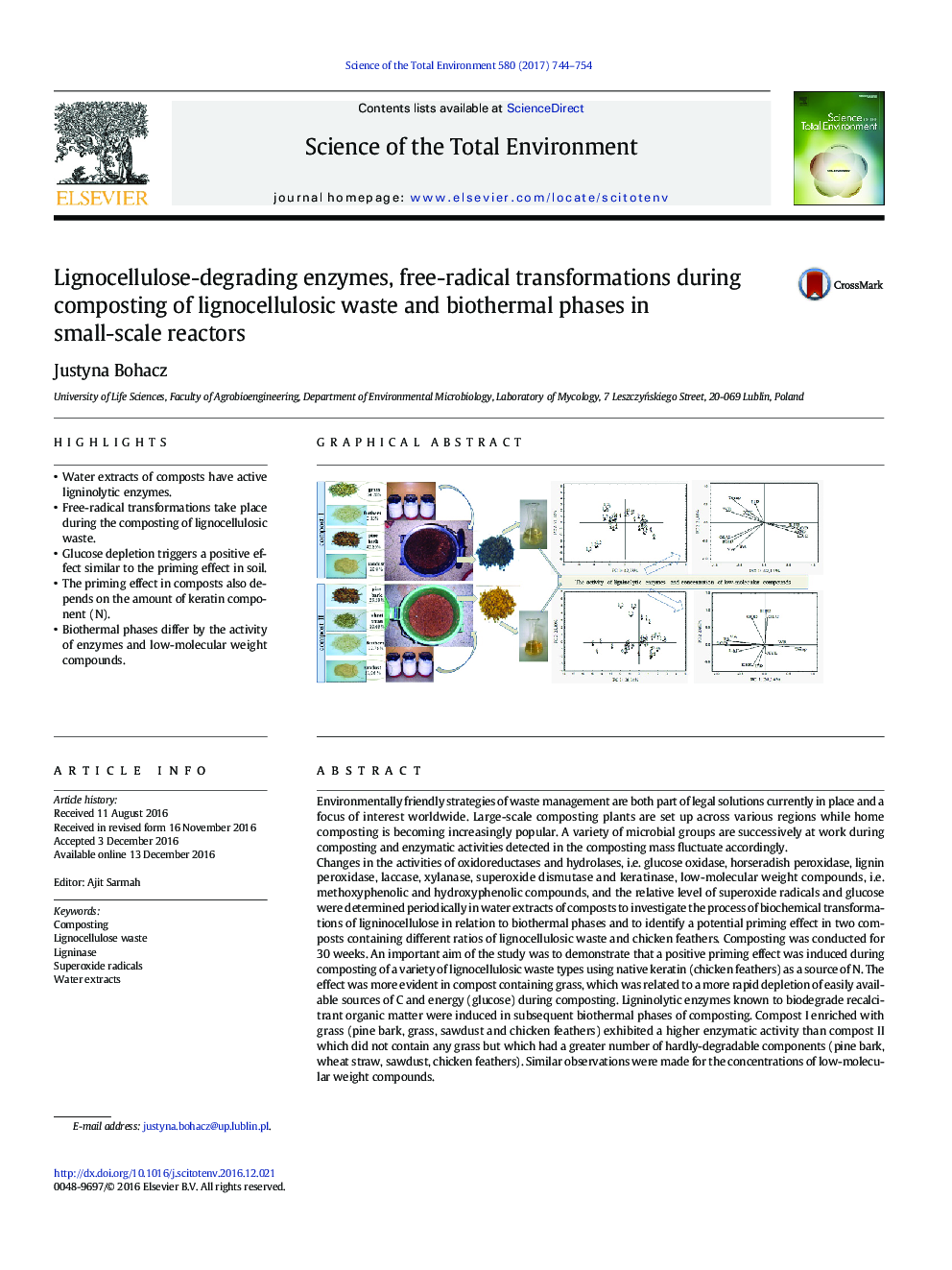| کد مقاله | کد نشریه | سال انتشار | مقاله انگلیسی | نسخه تمام متن |
|---|---|---|---|---|
| 5752114 | 1619711 | 2017 | 11 صفحه PDF | دانلود رایگان |
- Water extracts of composts have active ligninolytic enzymes.
- Free-radical transformations take place during the composting of lignocellulosic waste.
- Glucose depletion triggers a positive effect similar to the priming effect in soil.
- The priming effect in composts also depends on the amount of keratin component (N).
- Biothermal phases differ by the activity of enzymes and low-molecular weight compounds.
Environmentally friendly strategies of waste management are both part of legal solutions currently in place and a focus of interest worldwide. Large-scale composting plants are set up across various regions while home composting is becoming increasingly popular. A variety of microbial groups are successively at work during composting and enzymatic activities detected in the composting mass fluctuate accordingly.Changes in the activities of oxidoreductases and hydrolases, i.e. glucose oxidase, horseradish peroxidase, lignin peroxidase, laccase, xylanase, superoxide dismutase and keratinase, low-molecular weight compounds, i.e. methoxyphenolic and hydroxyphenolic compounds, and the relative level of superoxide radicals and glucose were determined periodically in water extracts of composts to investigate the process of biochemical transformations of ligninocellulose in relation to biothermal phases and to identify a potential priming effect in two composts containing different ratios of lignocellulosic waste and chicken feathers. Composting was conducted for 30Â weeks. An important aim of the study was to demonstrate that a positive priming effect was induced during composting of a variety of lignocellulosic waste types using native keratin (chicken feathers) as a source of N. The effect was more evident in compost containing grass, which was related to a more rapid depletion of easily available sources of C and energy (glucose) during composting. Ligninolytic enzymes known to biodegrade recalcitrant organic matter were induced in subsequent biothermal phases of composting. Compost I enriched with grass (pine bark, grass, sawdust and chicken feathers) exhibited a higher enzymatic activity than compost II which did not contain any grass but which had a greater number of hardly-degradable components (pine bark, wheat straw, sawdust, chicken feathers). Similar observations were made for the concentrations of low-molecular weight compounds.The enzymes activities and concentration of low-molecular weight compounds listed above can be used to estimate the biodegradation of lignocellulose during composting.
198
Journal: Science of The Total Environment - Volume 580, 15 February 2017, Pages 744-754
